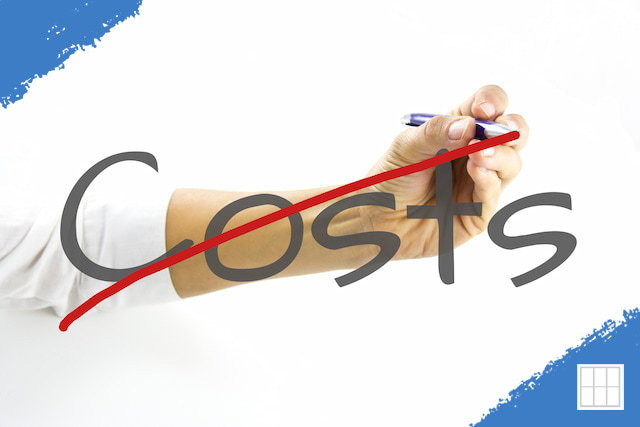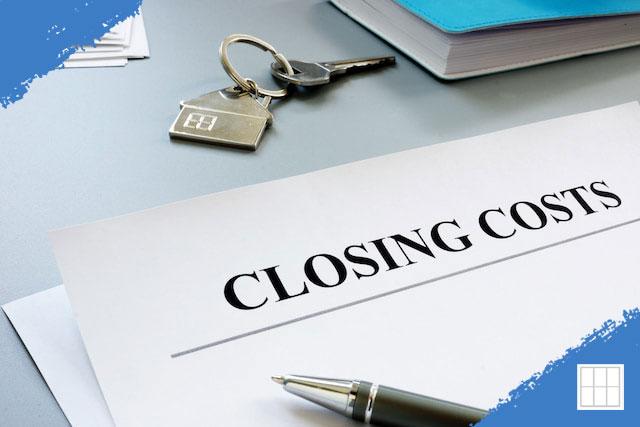When looking to refinance, a homeowner has several rate and cost options to choose from…

How to shop for and compare mortgage offers
When shopping for a mortgage, comparing offers from different lenders is essential. You may be tempted to go with the first offer you get, but that could cost you money in the long run. You can get the best deal by shopping around and comparing offers. Here are some tips for how to compare mortgage offers.
How to shop for a mortgage
Step 1: Determine the best type of mortgage loan for you
Several types of loans are available to borrowers, and it can be confusing to determine which is the best for you. Feel free to explore the loan options below to help you decide which one is right for you. Keep in mind that when choosing a loan, you’ll need to consider your current financial situation as well as your long-term plans.
Your loan term should be carefully considered to make sure you are making the best financial decision. Consider where you are in your life stage and family status that could affect your decision. Additionally, what kind of rate is offered for fixed or adjustable rates?
Step 2: Gather the necessary documentation
You’ll need to gather documents that show your income and assets. For the best mortgage lender to give you the most accurate quote, they will need the items outlined below
- Tax returns
- W-2 forms and other documents reporting income
- Bank statements
- Statements for any investments, including brokerage and retirement accounts
- Records of all your debt, including student loans, car loans, and personal loans
- Renting history
- Gift letters indicating that money gifted to you to buy a home is not a loan, if applicable
- Divorce, child support, and alimony documentation, if applicable.
- Records of bankruptcy and foreclosure, if applicable.
Step 3: Compare local mortgage offers online
When you’re looking for a mortgage, it’s essential to compare mortgage offers online. Verify that the company has been around a long time and offers low rates. You also want them to have good reviews from customers who used their services and are a trusted lender.
In addition, consider contacting a direct mortgage lender – as opposed to brokers – direct lenders deal directly with borrowers, which means they have fewer overhead costs and can pass those savings on to their customers. This savings means lower interest rates, quicker processing times, and better customer service.
What’s the Difference Between APR and Interest Rate?
The actual mortgage cost are represented in the annual percentage rate (APR). It accounts for all the expenditures you incur when you acquire your mortgage, such as closing costs. It disperses them throughout the loan, so you can estimate your monthly payment using an annualized rate.
In contrast, the figure used to calculate your monthly payment is your stated interest rate. It represents your annual interest payment, exclusive of any other fees, as a percentage of the loan balance. The APR, expressed as a percentage, represents the actual yearly cost over a loan term. The APR includes closing costs associated with the transaction.
The CFPB requires lenders to disclose their APR to prevent unexpected or hidden expenses. When comparing mortgage offers, it can be helpful to look at the APR, particularly if one has a relatively low-interest rate but higher closing expenses. In contrast, the other has a higher interest rate but lower closing costs. The loan with the lower APR can be the better value overall.
The APR is generally higher than the interest rate since it considers all the fees and costs. It’s only a fraction of a percent higher. Anything more significant requires a second look. When exploring 30-year mortgage rates, these fees are spread out over the loan term. The APR will be slightly higher than the interest rate. But for shorter-term loans, such as 15-year and 10-year mortgage rates, the difference between the APR and the interest rate will likely be more significant.
Should I Choose a Mortgage Based on the APR?
When comparing mortgage offers, the APR is a great tool when comparing two mortgages with different terms. However, it’s ultimately essential to consider all aspects of your loan when deciding. For example, if you plan on keeping the home for an extended period, you may be willing to pay points for a loan with a lower monthly payment to shred the overall interest costs.
Every mortgage lender does business its own way. Some use cost cutting-technology to make your borrowing experience easy and less expensive, while others do not or have a higher profit margin. You could be making payments on your mortgage for 30 years, so you should find a lender that suits your needs.
Researching your lender before signing any papers is essential. You should read their reviews, the website, and any documents they provide to get an idea if this is a company you want to work with.
Which Lenders Offer the Lowest Mortgage Rates?
So, how to choose a mortgage lender? The truth is no mortgage lender offers a clear advantage in all cases. Each lender has its own methods for calculating mortgage rates, so the lender with the best rate for one person might not have the best rate for another. It depends on the borrower’s circumstances.
It’s important to look into various lenders and see what they can offer you. Using our mortgage rate table can help you compare mortgage rates for your specific situation. You can start by checking your credit score before applying, which will help you better understand your financial standing.
Understanding the Loan Estimate
The loan estimate is an official three-page document that lists your loan amount, quoted interest rate, fees, and all other costs associated with the loan. Comparing loan estimates can help determine which offer is more cost-effective.
Every lender is legally required to provide you with a loan estimate within three days of getting your application and pulling your credit report.
What to Consider When Comparing Loan Estimates
To compare mortgage offers, you will want to compare the loan estimates with the items outllined below :
- Interest Rate: Make sure to verify the interest rate quoted is the same as on the Loan Estimate
- Interest Rate Lock-in: Has the interest rate been locked in or is it floating (not locked in)
- Prepayment penalty: This is a fee you must pay if you pay off your loan early. Most mortgages don’t have a prepayment penalty.
- Balloon payment: Mortgages with balloon payments have a low initial monthly payment for some time. Then, you must pay off the remaining balance at the end of the term. Variables are a risky feature for homebuyers.
- Private mortgage insurance (PMI): Paying PMI is an additional monthly cost for borrowers who put down less than 20 percent.
- Fixed Rate or Variable: Is the interest rate fixed, or is it an adjustable-rate mortgage? A fixed-rate provides consistent monthly mortgage payments, and a variable mortgage can fluctuate.
- Estimated cash to close: This is the total cash needed to complete the loan, including outstanding closing costs and pre-paid’s.
- Lender Fees: Page 2 breaks down all the closing costs and pre-paid expenses associated with the loan. Compare Box A between lenders to determine the difference in their charges, assuming the same rate. Also, it would help if you considered any lender credits in Box J. Look for “fake credits” in “calculating cash to close”; lenders use this trick to make their estimate look cheaper than it is.
Some lenders may quote you a lower rate possible by purchasing mortgage points. Also known as discount points, you pay additional closing fees to lower your interest rate.
How long you plan to stay in the home and keep the mortgage is a key factor in deciding whether to buy origination fees (points). If you plan on staying in your home for a short time, mortgage points typically do not make financial sense.
When Comparing Mortgage Offers, How Many Quotes Should You Get?
The CFPB recommends consulting with at least three lenders to maximize your potential for savings. According to the CFPB, borrowers with the best mortgage interest rate available saved about $300 a year, or $9,000 over a 30-year mortgage.
Metropolitan Mortgage can provide you with your best offer!
Compare mortgage offers, it is well worth your time, especially if you plan to remain in your home for the long term. While saving 1/4 percent might not seem like much upfront, it makes a significant difference throughout your loan. Take the extra time to search for a mortgage that fits your need and budget. Your wallet will thank you for it.
Metropolitan Mortgage has been in business since 1997, and we have assisted many home buyers in the Midwest. If you are looking for mortgage financing in Overland Park and the greater Kansas City metropolitan area, we can help. Metropolitan Mortgage offers mortgage programs in Kansas and Missouri.



